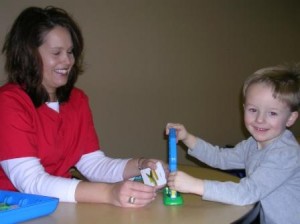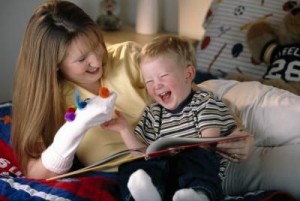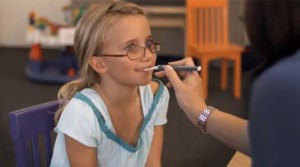How to Teach the “R” Sound
The “R” Sound
The “r” sound can be especially challenging to pronounce. It’s a voiced sound, produced by the vibration of the vocal cords. The reason why this particular sound is so difficult to master is that it can be correctly pronounced 8 different ways, depending on the letters with which it is combined. If you factor in the positioning of all of the variations of an “r” at the beginning, middle, or end of a word, you end up with 21 total variations.
The “R” Vocalizations
- R
- Or
- Er
- Air
- Ear
- Ire
- Ar
- Rl
Children typically begin to learn the “r” sound by the time they are 2 1/2 years old. If your child has not yet mastered the sound after age seven, it’s time to take him to a speech-language pathologist (SLP) for an evaluation. You should also bring your child to an SLP before the age of seven if you believe that he may have a problem with articulation. The SLP will likely begin by working with the child to master individual “r” sounds and move on to incorporating that sound correctly at the beginning, middle, and end of a word.
Speech Therapy at Home
You can encourage your child’s progress by working with your child at home between speech therapy sessions. Ask your child’s SLP for lists of target sounds and words that they are currently working on in speech therapy. Work on those sounds and words at home. You can also customize target words to suit your child’s interests to keep him engaged in learning. For example, if he’s a soccer enthusiast, work on the “er” sound in “soccer” with him.
Verbal Prompts
One method for encouraging “r” vocalizations, other than drilling and repetition, is to encourage your child to repeat animal sounds with you. Stretch out the “r” sounds as you “roar” like a tiger, “ruff” like a dog, and “growl” like a bear. Sing songs together that emphasize “r” sounds, such as “Row, row, row your boat.”
If your child has trouble singing “r” songs and making animal noises, take a step back and work on the basics with him. Some children find that it’s easier to make a proper “r” sound if they start with a vowel and then add the “r.” Encourage your child to bray like the donkey Eeyore on “Winnie the Pooh.” Start by stretching out the “eee” and have your child join you. Add an “or” sound to the end.
Tactile Feedback
Your child can also benefit from receiving tactile feedback for the “r” sound. Use the R Speech Buddy to help your child learn proper positioning of the tongue. The R Speech Buddy provides a target in his mouth that encourages him to curl his tongue slightly in order to articulate the “r” sound. To use this tool, place the coil of the R Speech Buddy just behind your child’s upper teeth. Your child should curl his tongue upward slightly until he can feel the bumps on the Speech Buddy. For more information about using the R Speech Buddy to improve articulation, watch the R Speech Buddy video.





